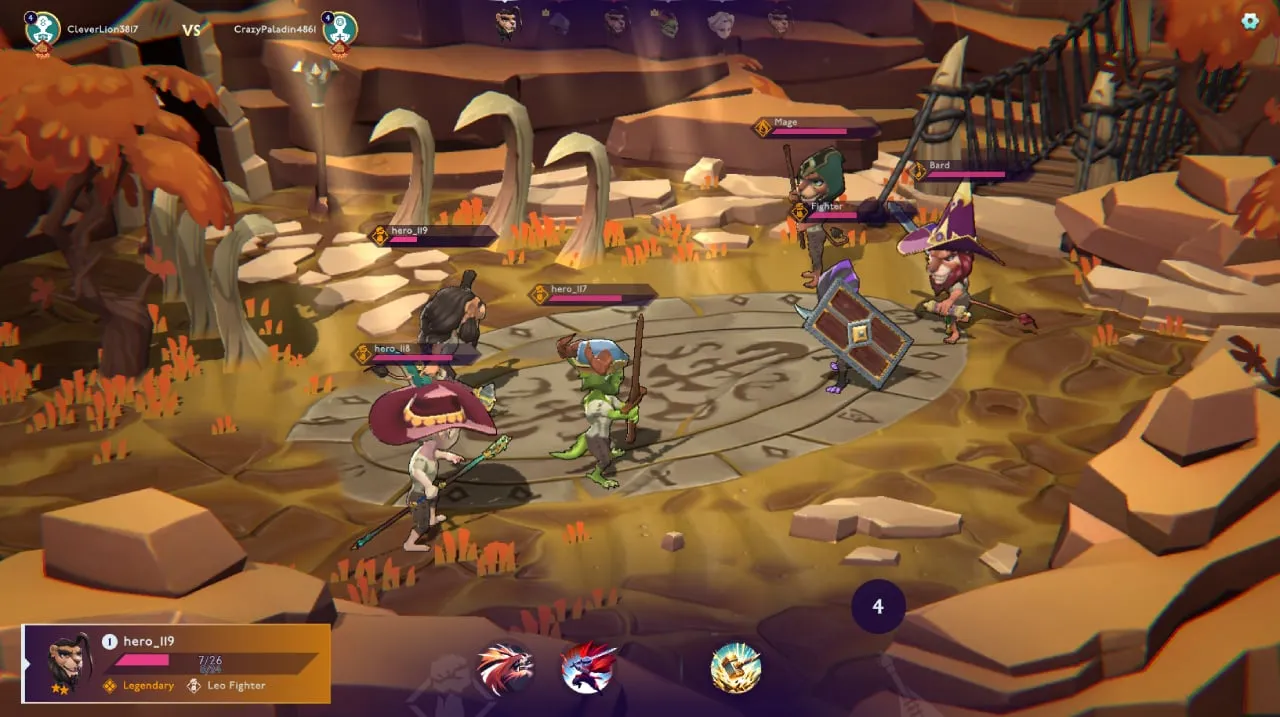Blockchain-powered role-playing game (RPG) Chain of Alliance pits parties of Heroes against each other in turn-based battles, using the spoils of war to craft and engrave items and equipment, customizing your party members.
Heroes can be minted as NFTs, with their progression recorded directly on the NFT—but even if you’re a blockchain neophyte the game is easy to pick up and play.
With the launch of its beta version, there’s never been a better time to dive into Chain of Alliance. Here’s how to get started.
Getting started
Upon launching the game at play.chainofalliance.com, you’ll first be prompted to register. You can either log in using your Google account, which spins up a Web3Auth wallet for you, or connect an external crypto wallet.
Next you’ll be treated to a short tutorial to introduce the basic combat mechanics.
After completing the tutorial, you’ll arrive on the Play screen. At the top left of the screen, you’ll be able to switch between Play, Temple, Forge and Market. To the right you’ll see your current holdings of Shards, TCoA tokens, your inventory of resources, and Messages. There’s also a Settings menu to tweak sound and music levels.
Heroes
Heroes are the core asset of Chain of Alliance, and are created and managed in the Temple.
Heroes can be drawn from one of five species: Human, Elve, Shadeborn, Leo and Draco. Each has different attributes:
- Humans benefit from increased Health (VIT) and are more receptive to healing spells.
- Elve have increased Speed (AGI) and accuracy.
- Shadeborn have increased Speed (AGI) and inflict increased critical damage.
- Leo gain increased Physical Damage (STR) and critical damage.
- Draco have higher Intelligence (INT) and an increased chance of resisting negative effects.
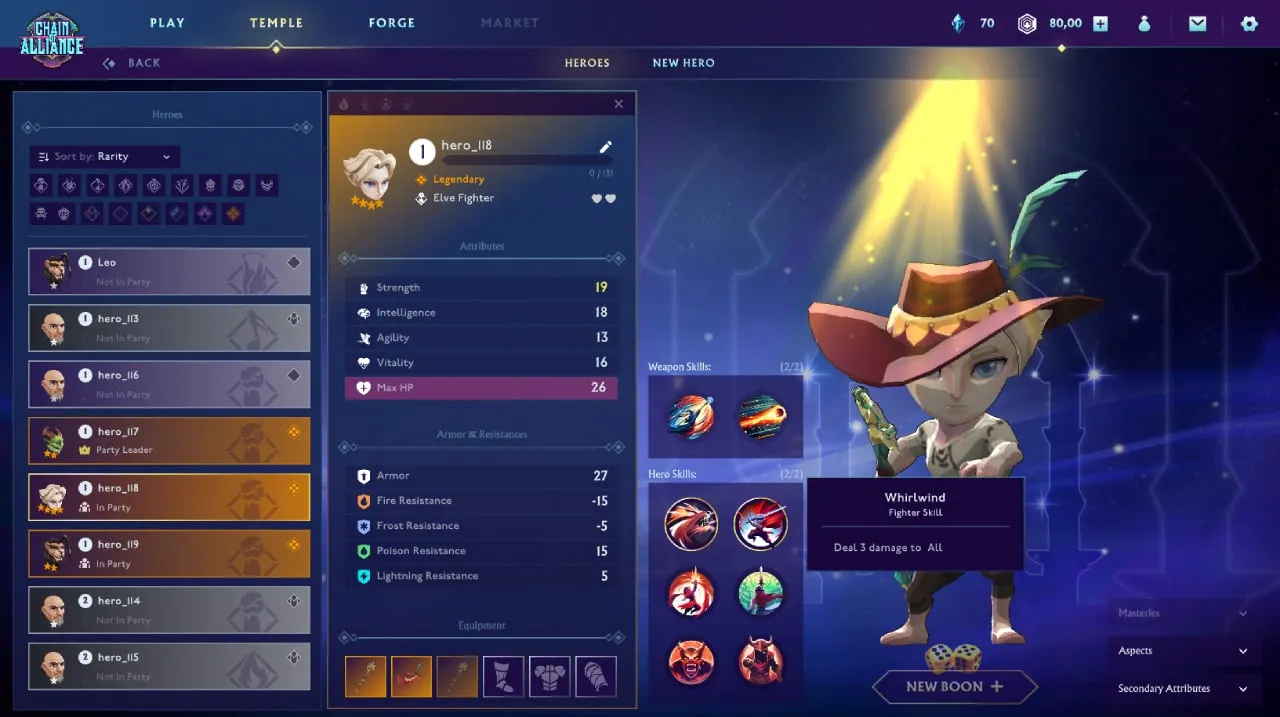
Each species can also gain specific minor and major Boons as they progress through the game, which buff the Hero’s stats and provide specific effects and bonuses.
At the start of the game you’ll receive access to three Mercenary heroes, who can’t equip items or advance beyond level five—to ensure that you never find yourself in a situation where you can’t play because you have no Heroes.
To create your own new Heroes, you’ll need to select a Blessing, which determines their character class. These include the Bard, Fighter, Assassin, Ranger, Paladin and Mage.
- Fighters are a tank class that deliver high DPS.
- Paladins focus on protecting themselves and their teammates with Skills like Taunt and Shield.
- Rangers focus on critical hits using the Mark status.
- Bards play a support role with shielding, healing and buffs.
- Assassins excel at inflicting damage over time using Bleeding effects.
- Mages are casters that can exploit their opponents’ weaknesses.
Each Hero also requires four Fragments to create: Intelligence, Strength, Vitality and Agility, with each Fragment buffs your Hero’s core stats by a different amount. Starting heroes have a capacity of six Fragment slots, with more powerful Fragments taking up more than one slot – so you’ll have to choose carefully to make the best use of them.
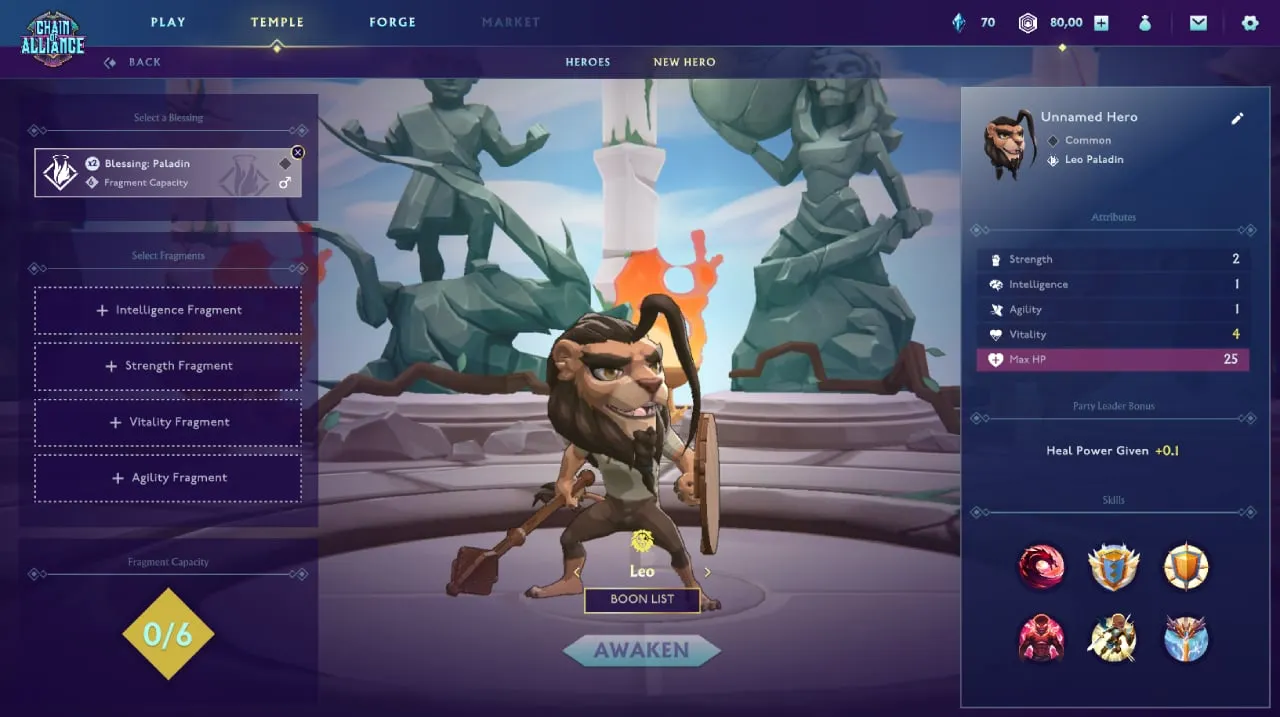
Heroes can also be equipped with up to four Skills, two of which are based on their weapon and/or shield loadout, and two drawn from a pool that’s unique to each Class.
Once you’ve finished creating your Hero, click Awaken to mint them on the blockchain as a unique NFT.
To Battle!
Once you’ve created your Heroes, it’s time to thrust them into the field of battle. In the Play menu, you can create Parties of Heroes – simply click on the + icon at the bottom of the page.
Here, you’ll select up to three Party members, one of whom will be the Leader—which gives the Party a class-specific buff. You’ll also select the layout of your Party, which can impact on their defense against different attacking moves.
Once you’ve named your Party, head back to the Play screen, where you can select what type of match you want to play—in the Beta version of the game, you’re currently restricted to Ranked PvP play, but later updates will add PvP Tournaments, PvE and Expeditions.
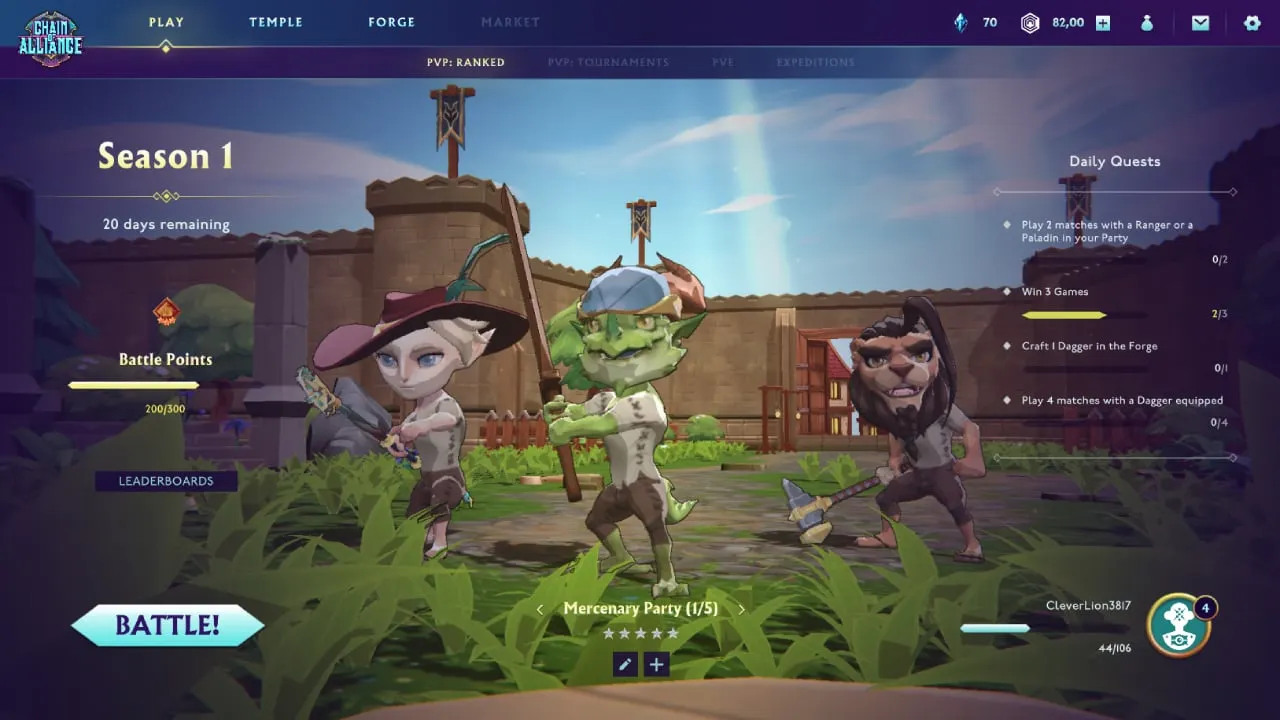
The Play page also tracks your Battle Points, and features Leaderboards and Daily Quests, which enable you to collect rewards for playing matches with specific conditions, using particular weapons or Hero types, or crafting unique items.
After selecting your Party, click on the Battle! button to match with a ranked opponent.
In Battles, you’ll cycle through your Heroes in turn-by-turn combat, selecting from their array of attacking and defending moves, which are chosen from a selection based on their class and loadout.
Attacks range from cleaving blows that can hit multiple enemies, to strikes that can cause unique damage types including Fire, Frost, Lightning and persistent Bleeding or Poison damage. To defend against these attacks, Heroes can call on blocking or shielding moves—or even Taunt the opposing Party to direct all their attacks at one Hero.
All these attacks and defenses can be further bolstered by your Heroes’ equipment, with weapons and armor conferring different advantages and disadvantages. Items can be further customized by Engraving them in the Forge.
By combining Heroes with complementary abilities and equipment, players can assemble a Party that can take on all-comers.
After each battle, you’ll receive Battle Points, which rank your progress through each of the game’s Seasons, and are reset at the end of each Season.
You’ll also receive rewards based on your Heroes’ performance in battle, including the Blessings and Fragments needed to summon new Heroes in the Temple, and recipes and components used to craft Equipment.
Crafting and Engraving
The Forge screen is where you can craft new Equipment and customize existing weapons and armor by Engraving them.
To Craft a new item, head to the Crafting page, and select a Recipe from your available pool. Each item will require one or more Heroes to Craft it, and will draw on your pool of Materials. These include resources such as Metal, Gems, Crystal, Leather and Wood.
Each Hero contributes Item Power (IP) to the Crafting process, which stacks and determines the Item Power of the crafted item. The higher the item’s IP, the higher the min-max bracket within which its stats are randomly determined.
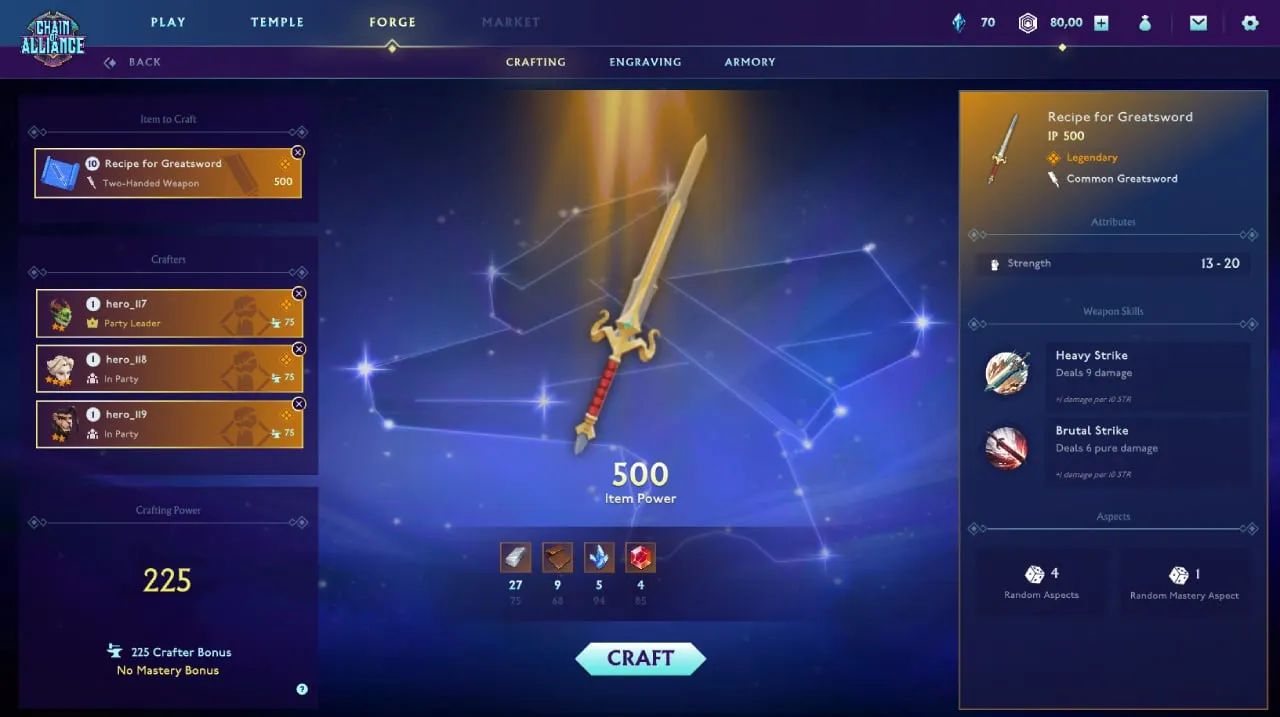
If a Hero has achieved Mastery with an item through leveling up, they gain an IP bonus when crafting—and when crafting rare items using Uncommon materials, they also gain access to that item’s Mastery Aspect.
Resources come in Common and Uncommon variants, which can, in turn, be used to craft Common and Uncommon items. When Crafted, Uncommon items generate random Aspects alongside their base stats, which can enable them to inflict or defend against special damage types. For example, the Volt Fury aspect increases Lightning damage, while the Protective Bubble aspect grants the user a shield and extra vitality when their health drops to 35%.
Engraving, meanwhile, enables you to increase the IP of your items, and also add Runes to them—changing their Aspects to suit your play style. Runes are dropped as part of the rewards for victory in battle.
Sponsored post by Chain of Alliance
Learn More about partnering with Decrypt.

